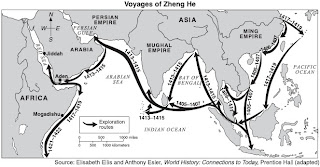Emperor Yongle had high hopes for China. Especially with the successful buildings, extension of the Grand Canal for trading, and its booming population. Trading was China’s source of foreign material goods. England was trading her silver to China, and in return, China would give her precious silk, tea and porcelain. Everything was looking great till the trading became the problem. England began to trade opium, along with silver. That’s when China’s addiction started to kick in, and get out of control.
Let’s say that each family in China was given thirty wen a year for all the silk, tea and porcelain they made. If the families were hooked on opium, and therefore spending their year’s money on it, would they have money to spend on food for survival, or materials to make tea, procelain and silk? No, they wouldn’t. So China had a problem. The government tried to fix it, which lead to an opium war, then a rebellion, and in the middle of the rebellion, a second opium war, and afterwards, another war and a rebellion.
Unfortunately for China, the opium trade didn’t just continue. After 1830, the trade intensified. China’s lack of production caused originally England’s silver, which was in the hands of the Chinese, to actually be reversed back to England. The treaty that ended the madness and chaos of the opium wars, and of course the other disasters of the Qing, left China’s economy in ruins.
The pictures of porcelain vase — from the Qianlong era — and silk are examples of what China used to trade with England. The pods of opium seeds that England traded in return for China’s goods, such as tea and silk, is represented by the picture of the poppy flower.





